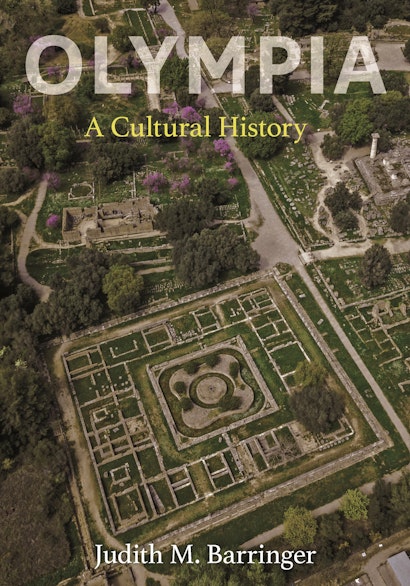In this Olympic year we look to the place where this tradition of sporting excellence began – Olympia and Ancient Greece. A place full of wonder, magic and myths, what is the real history behind the ancient site and what do its ruins tell us about life in the Roman World? In her book Olympia classical archaeologist Judith Barringer gives us an up-close look at the religious and political history of the site and delves into its archaeological record. In A Thing of Beauty Peter Fiennes travels to the Olympia and the sites of some of the most famous Greek myths on the trail of hope, beauty and a new way of seeing what we have done to our world. They join Julia Wheeler to chat about the legacy of these sites and why the stories surrounding them still have such an impact today. What’s to be seen at the places where heroes fought and gods once quarreled?
The memory of ancient Olympia lives on in the form of the modern Olympic Games. But in the ancient era, Olympia was renowned for far more than its athletic contests. In Olympia, Judith Barringer provides a comprehensive and richly illustrated history of one of the most important sites in the ancient Greek and Roman world, where athletic competitions took place alongside—and were closely connected with—crucial religious and political activities.
Barringer describes the development of the Altis, the most sacred area of Olympia, where monuments to athletes successful in the games joined those erected to the gods and battlefield victories. Rival city-states and rulers built monuments to establish eminence, tout alliances, and join this illustrious company in a rich intergenerational dialogue. The political importance of Olympia was matched by its place as the largest sanctuary dedicated to Zeus, king of the gods. Befitting Zeus’s role as god of warfare, the Olympian oracle was consulted to ensure good omens for war, and the athletic games embodied the fierce competition of battle. Other gods and heroes were worshipped at Olympia too, Hera, Artemis, and Herakles among them.
Drawing on a comprehensive knowledge of the archaeological record, Barringer describes the full span of Olympia’s history, from the first monumental building around 600 BC to the site’s gradual eclipse in the late Christianized Roman empire. Extensively illustrated with maps and diagrams, Olympia brings the development of Olympia vividly to life for modern readers.
Judith M. Barringer is professor of Greek art and archaeology at the University of Edinburgh. Her books include The Art and Archaeology of Ancient Greece and Art, Myth, and Ritual in Classical Greece. She lives in Edinburgh and Berlin.
